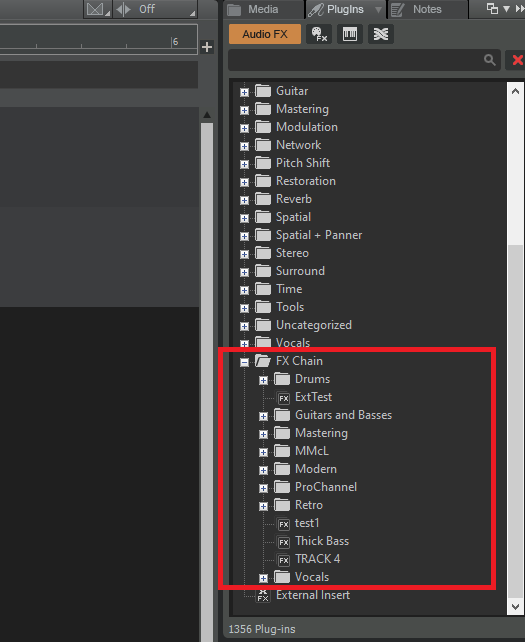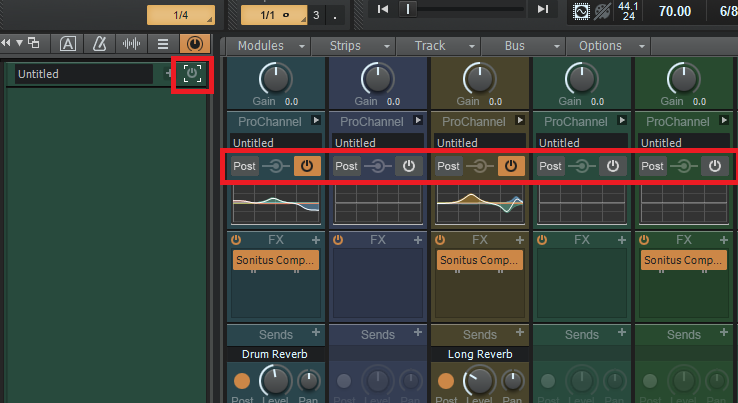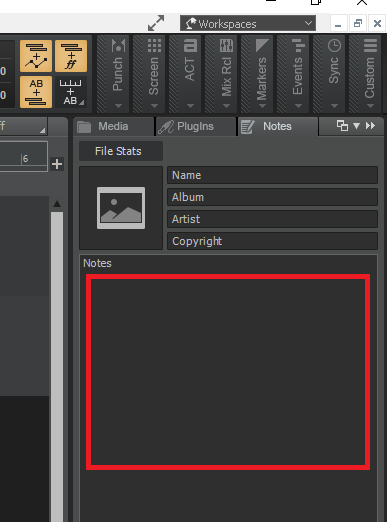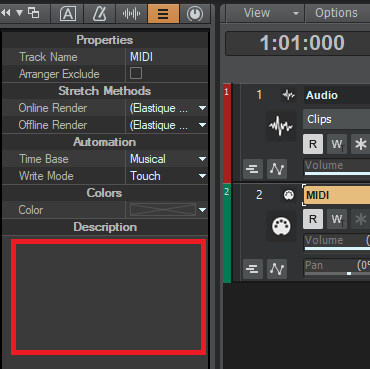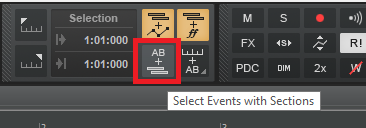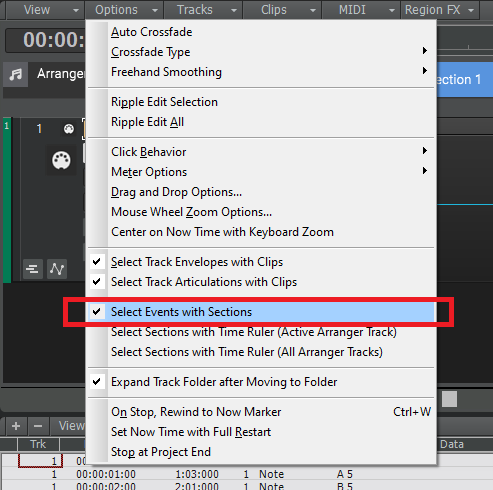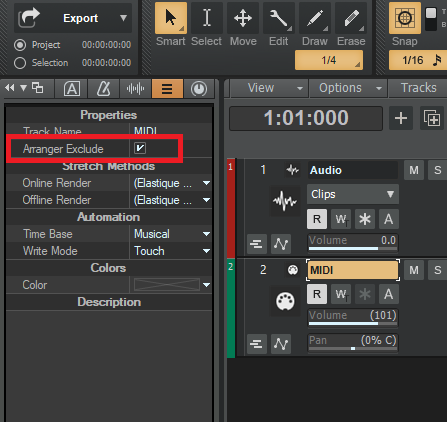-
Posts
7,186 -
Joined
-
Last visited
-
Days Won
39
Everything posted by msmcleod
-

Introducing Cakewalk Next and our new brand identity
msmcleod replied to Jesse Jost's topic in News & Announcements
From what I understand from the posts by the devs, other than the new UI update that's coming and probably a few new bells and whistles, this is going to be identical to the current CbB under the hood on launch. This is correct. It'll be just CbB with new images, high dpi support and a few extra feature enhancements. There is obviously some difference between rendering vector based images vs static bitmaps, but we'll be monitoring the performance of this closely as more of the application is converted over. There are a few approaches we can take to mitigate any adverse performance effects of rendering vector based images, should it become a problem.- 715 replies
-
- 14
-

-

-
Ironically, my (now pretty old) ASUS motherboard was having intermittent crashes until I slightly increased the CPU voltage. Now it's rock solid.
-

Introducing Cakewalk Next and our new brand identity
msmcleod replied to Jesse Jost's topic in News & Announcements
The transition to vector based images is taking several months. To support user vector graphics will require writing a completely new Theme Editor. We're not saying this will never be done, but it won't be done for the first release of Sonar. -
@Peter Mangold - We're aware of the issue and are looking into ways to fix it. As a temporary workaround, you can do the following: 1. Open up powershell ( Windows Key + X, then press A ) 2. Type in the following: 3. Add the following lines to the bottom of the file, and press CTRL + S to save: 4. Run CCC as normal, and do what you have to do. DO NOT FORGET TO DO THIS AFTERWARDS: When you're finished, follow step 2 then comment the two lines out, and press CTRL + S to save:
-

A droppout has stopped the audio engine (1)
msmcleod replied to Giacco's topic in Cakewalk by BandLab
When you switch to WASAPI, you won't get any ASIO drivers listed as you're no longer using ASIO. You should get your laptop's onboard soundcard listed as a device under WASAPI though, so choose this. This device will be fine for mixing. When you plugin in your Focusrite again, switch back over to ASIO mode and choose the Focusrite ASIO driver. -
IIRC, the edit box controls will truncate the display of fractions by showing it as a rounded value if there's not enough room to show it fully (i.e. you've reduced the width somehow). I came across this phenomenon when dealing with the stretch % in the clip inspector. However, even if the display is showing as rounded, the underlying value is actually as you've entered it.
-
The documentation mentions selecting the sections first... you don't actually have to do this. If no sections are selected, clicking the "Add sections to arrangement" button will add them all in their current order. So @Starship Krupa: 1. Make sure nothing is selected 2. Click the "Add All Sections to Arrangement" button 3. Delete the section you want to skip from the arrangement 4. Click the Arrangement play button.
-
Start dragging from the browser, then hold SHIFT down while you're dropping on the FX bin. This will extract the FX from the FX Chain container before dropping them in the FX bin.
- 160 replies
-
- 2
-

-

-
- feedback
- improvements
-
(and 5 more)
Tagged with:
-

A droppout has stopped the audio engine (1)
msmcleod replied to Giacco's topic in Cakewalk by BandLab
Don't use aggregate devices like FlexASIO - only use your manufacturer's official ASIO driver. if you're working without your interface, set Cakewalk to use WASAPI Exclusive or WASAPI Shared, then switch back to ASIO when you have your interface again. -

Grouping/hiding multiple tracks in console view
msmcleod replied to cwiggins999's topic in Cakewalk by BandLab
In that case, "Keep track/console visibility states in sync" is unchecked - meaning your console & tracks view will have different hide states. -
You can - I use drag/drop with FX chains all the time. They're listed at the bottom of the PlugIns page:
- 160 replies
-
- 2
-

-
- feedback
- improvements
-
(and 5 more)
Tagged with:
-

Microtonal pitch correction on mixed down stereo audio Wav file?
msmcleod replied to TH's topic in Cakewalk by BandLab
There's a missing step here to make this work... after switching on looping, change the splice resolution from 1/8 to "no slice", otherwise moving the threshold down to zero will leave the markers in place. -
-
I doubt if the AI will actually be doing any processing on your machine. It's more likely that your usage habits will be sent to Microsoft, and profiled alongside everyone else on one of their servers - a simple query to that server at a later date will tailor your experience to best match your usage. We've all seen browsers do this kind of thing, but maybe Microsoft has something else in mind such as fine-tuning background processes to get the best performance out of the apps you use. AI doesn't always need to take up a lot of resources at the point of consuming it. Take the XBox Kinect for example - Microsoft took video shots of tens of thousands of users doing various poses and built up a neural net on a server. Only the resulting neural net was embedded in the device, the result of which can easily process your movements in real time with minimal internal processing / power consumption. I've even seen Arduino projects using the Kinect (which run at 16Mhz)- so it's definitely the Kinect itself doing the processing, and just outputting the recognised gesture.
-

Change Default for MIDI from TTS-1 to Roland Sound Canvas VA?
msmcleod replied to dalemccl's topic in Cakewalk by BandLab
Once the MIDI file has loaded, right click on the synth track then use "Replace Synth" to change it to the Roland Sound Canvas VA. -
The fader on Bus B controls the level of everything that is coming out Bus B, so yes. The only exception to this is any pre-fader sends from Bus B to anywhere else.
-

IPAD2 - How to connect iPad 2 as device and MACKIE control surface
msmcleod replied to Milton Sica's topic in Tutorials
I had exactly the same experience. Having to basically re-do the setup every time I booted up my DAW machine was too much hassle for me. For vocal takes, I use a nanoKONTROL 2 velcro'd to the wall near to my mic. It's set up as a Mackie Control and connected to the PC via a 5m USB cable. -
If they're project-wide notes, you can enter them in the Notes section, under the notes tab of the browser: There are also areas for track notes: and also for clips ( automation lanes also have a similar area for notes):
-
This sounds more like a plugin that has reverted to demo mode. Quite a few plugins emit white noise every so often when they're not registered.
-
Check the output of all of your buses/tracks - one of them may be routed directly to the audio interface. This depends on your routing. If Bus B has the vocal reverb on it, then that makes total sense - you're turning the whole reverb bus down. If however, you have a send from Bus B to a separate reverb bus, it'll be because you've got the send set to post-fader rather than pre-fader.
-

Grouping/hiding multiple tracks in console view
msmcleod replied to cwiggins999's topic in Cakewalk by BandLab
They're the same dialog, but act on either the Track View or the Console View depending on where it was launched from. If the Console View has focus (as in Windows focus), the "H" key will bring up the Track Manager dialog and will apply to the console - otherwise it'll apply to the Track View. If "Keep track/console visibility states in sync" is checked, then any changes will apply to both the console and the track view. To avoid confusion, you can launch it from the Console View "Strips" menu for the console view, or from the "Tracks" menu in the Track View. You can also save per-project presets in that dialog here so you can switch between different sets of hidden tracks as required. Note that the presets only contain the tracks that are specifically hidden, so if you add any new tracks they'll be visible by default (until you update your presets of course). -

Copy/paste arranger track between projects?
msmcleod replied to Billy86's topic in Cakewalk by BandLab
Yes, just save the arranger track as a template then insert it from the template the mastering project. -
The SW1000XG should run fine in Windows 7 32 bit, assuming your motherboard is compatible. The drivers are similar (and some of them the same) to the DS2416 - I've got two of these in my Asus P8B75-V and they run fine in Windows 7 32 bit. You are of course limited to a 3rd gen Intel processor, but I have no issues with my i7-3770 running at 3.4Ghz. I've got a quad-boot: 2 x Windows 10, Windows 7 64 bit and Windows 7 32 bit. Windows 11 isn't an option though - the CPU is too old, and the Asus P8B75-V doesn't have TPM (though weirdly the P8B75-M does have a socket for one). For Windows XP though - if you've had an old MSDN subscription in the past, that key will work forever.
-

Moving an arranger section doesn't move envelopes
msmcleod replied to David Pollock's question in Q&A
By default, clicking a section toggles the event selection on/off. If you just want to move sections around without the events, you can switch event selection off by unchecking "Select Events with Sections" here: ... or within the select module: When this is active however, the toggle behaviour returns. You can however, exclude tracks from the arranger here, so they won't be included in arranger operations:



